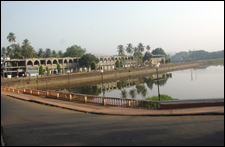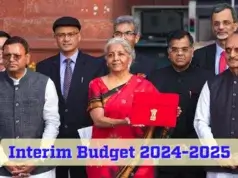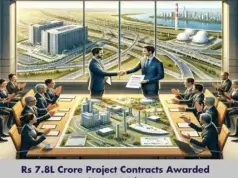 There is much talk in professional as well as non-professional circles about “sustainable development.” And yet, how many of us really understand the term that we so freely bandy about? And do we really practice a sustainable existence ourselves to whatever extent possible? Hyacinth Pinto, Principal Architect, Terra Firma, Goa, has the answers.
There is much talk in professional as well as non-professional circles about “sustainable development.” And yet, how many of us really understand the term that we so freely bandy about? And do we really practice a sustainable existence ourselves to whatever extent possible? Hyacinth Pinto, Principal Architect, Terra Firma, Goa, has the answers.
What do we mean by the word “sustainable”?
The dictionary defines the word “sustain” as follows: “to keep up or maintain,” “keep in effect or being,” “to maintain by providing with food and other amenities,” “to keep from sinking or falling,” “to endure without succumbing,” “to withstand.”
We obviously do not sustain the earth, the earth sustains us. But for how long can it continue to sustain us if we keep depleting its resources without replenishing them?
It is never too late to take stock of our contribution in this regard to this unique planet Earth which sustains our existence. Our responsibility is even larger as professionals who tamper/make changes that leave indelible imprints on the planet.
We, as architects, constantly design and redesign our “environment.” And therefore we need to understand and remind ourselves that “environment” goes beyond the “built” environment. Because we are part of an entire “ecosystem” that has myriad facets and types of organisms, plant and animal life, insects, inanimate matter and energy systems. All of which contribute one way or another to the existence of other life forms and thereby make it an “eco-system.”
The dictionary defines the word “environment” as: “the aggregate of all conditions affecting the existence, growth, and welfare of an organism or group of organisms” and “surroundings or external circumstances.”
As architects, we are constantly affecting the “environment” and its conditions. And therefore we are definitely responsible for maintaining (or destroying) the “environment” and its delicate “ecological” balance. A doctor’s mistakes are biodegradable. They are either buried, burnt, or fed to vultures and other life forms. Let our mistakes (or even masterpieces) also be biodegradable or recyclable.
Which brings us to the definition of “ecology”. The dictionary defines the word as “that division of biology which treats the relations between organisms and their environment” or “the system of relationships between organisms and their environments.”
As architects, we are undeniably affecting the eco-system. And since we are part of that eco-system, we are affecting ourselves by our actions.Therefore it is necessary for us to take adequate steps to rebalance the ecosystem that is being disturbed by our interventions. And thereby rectify and enhance, if possible, the quality of the environment.
And do this in such a way that the earth can “sustain” the nature of development activities along with all the life forms and matter (animate as well as inanimate) that it contains.
 The 10 commandments for sustainable development can be summarised as follows:
The 10 commandments for sustainable development can be summarised as follows:
- Make conscious and conscientious choices of the nature of material to be used in construction, in terms of climate, availability, recyclability, reusability etc. Avoid the use of material that is energy-intensive in its processing, extraction and manufacture. Reduce the generation of waste products that are non-biodegradable, non reusable and non-recyclable. As far as possible, select materials so that when the life of the building is complete and it goes to ruin for one reason or the other, the materials should disintegrate and not leave an incurable scar on the earth. The building material should be naturally digested back into the earth and degenerate/degrade back into its crust/regenerate as minerals/composites for reuse.
- Maximise the use of natural light and ventilation in your creations, thereby reducing dependency on energy-intensive systems for lighting and ventilation.
- Design climate-responsive structures and spaces that do not depend on artificial and mechanical means for achieving comfort levels within the structure. Select materials with the right thermal mass depending on the sun-path, and provide strategically located and properly designed openings etc.
- Be minimalistic in your approach to design. Use material appropriately according to its physical properties and structural capabilities. For example, avoid the use of reinforced concrete in compression members such as arches and vaults, where masonry blocks are more appropriate. Use fly-ash bricks, masonry blocks of recycled material as far as possible, compressed soil blocks, rammed earth etc. for walls, and reduce wall thickness to the bare minimum for structural need and necessary thermal mass. In non-load-bearing walls, use the minimum thickness of appropriate material. Be sparing with ornamentation. The bold use of material in its raw state can be very appealing, sometimes more so than highly ornamented structures.
- Use locally-available material as far as possible, thereby minimising transportation needs and fuel consumption for the same.
- Harvest rain water and storm water, thereby minimising runoff. You can either use the water to recharge the groundwater table, or recycle it for use in landscaping, flushing toilets etc., thereby reducing the load on public water supply systems.
- Utilise solar energy for cooking, heating water for bathing, and applications such as outdoor lighting etc. as far as possible.
- Provide for waste management in your designs i.e. provide space for composting as well as for garbage segregation. (For example, large buildings should be designed with garbage chutes that open into an accessible room on the ground floor). Use root-zone and other alternate systems of wastewater treatment, even for domestic sewerage treatment, so as to return as much water to nature as possible. Also so that the same can be utilised for landscaping and watering plants and trees in dry weather, instead of the wasting the potable water that is supplied via the public distribution system for this.
- Design within the local environment and micro-climate of the site, with respect to natural resources, plant life etc. by preventing the destruction of the same and designing in a symbiotic manner. Design spaces that afford comfortable living both indoors as well as outdoors. Minimise the cutting of trees in tree-covered areas. Build with terracing (equal cut and fill) on hill slopes. Do not damage/destroy natural water bodies. Do not dump your building debris onto mangrove-lined riversides/backwaters in order to widen your site and create river-side decks, even if your client demands it. It is our duty for having been educated in this area, to pass on this education to our clients and thereby reduce environmentally-destructive requests. The recent Uttarakhand tragedy is a “grave” example to reiterate this important aspect of construction.
- Follow the eco-mantra “refuse, reduce, reuse, recycle.” Refuse to be led on to purchase indiscriminately, products that you will rarely need to use and will gradually dispose into the environment. Reduce wasteful consumption of goods. Reuse whatever is usable instead of disposing it for newer items of the same kind. Recycle as much as possible. Create wealth out of waste.
|
Planning for development is itself a great responsibility. Depending on the nature of development envisaged, we directly affect/intrude into the selected environment. Therefore any development requires an environment-impact assessment prior to demarcating the same for a specific purpose.
Some areas are better left untouched, such as forests, wetlands, mangroves etc., as they support complex ecosystems that will definitely be destroyed by our intervention. However, plateaus, arid lands and lands that are unsupportive of nature should be considered for development as these will get greened by the very fact that they will be used by a section of people who will want to landscape their surroundings and bring in added infrastructure, thereby enhancing the local environment. Industrial belts etc. should be planned on such arid wastelands and plateaus.
Right from appropriate site selection, architects should involve themselves responsibly in enhancing the environment rather than destroying it. We can do this if we raise our voices at the right time in the right forum. And we must work towards this common vision or else we will only increase the rate at which humankind is spiralling itself towards suicidal self-destruction, taking along with it the entire eco-system.
We have only one life, one planet…let’s work together towards protecting the environment of our common home.











